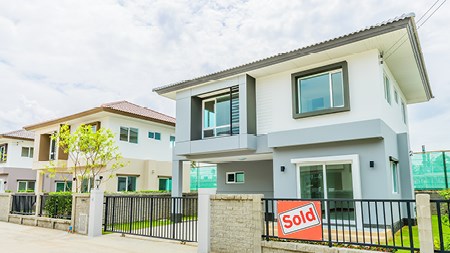Garage door – In many cases, the entrance to a property is the garage door, and this is often the first thing that buyers notice. A new door or even just a coat of paint will go a long way to update the overall look of your property. If the door is wooden, it is worthwhile to sand it down and reseal it.
Windows – Old window frames can severely age a property; replacing them will create a fresh look. The average home has eight windows, which means that the cost of replacing them is generally less than the perceived value. Otherwise, replace broken or cracked panes and apply new putty where necessary. Check that the seals around the doors and windows keep drafts out.
Floors – If your home is carpeted, a professional leaning will rejuvenate their look and leave your home smelling great. Alternatively, they should be replaced; buyers can smell a new carpet. If the home has hardwood flooring, have it sanded and varnished. Generally, buyers place high value on homes with wooden flooring.
Paint work – Although painting the entire house is ideal, this can be expensive and time consuming. Painting the trim and gutters is a small improvement that makes a big impact. Also touch up the skirting boards and other areas that need it. It is better to opt for one colour from a neutral palette throughout the home. Wallpaper is a very personal choice – rather stick with paint.
Fixtures – Replace fixtures that are damaged or outdated. A contemporary light fitting and updated taps can change the entire look of a bathroom or kitchen. Check for leaking taps, and make sure that toilets are sealed and secured to the floor. Grouting and sealant around all bathroom fixtures should be checked and renewed if necessary.
Kerb – The outside of your property and front garden are the first thing that buyers will see, so mow the lawn, pull out the weeds, edge the pavement outside and your driveway, and plant some flowers.
Keep it clean – Make sure that your home is clean and tidy. You want the best possible picture of your home in potential buyers’ minds.
De-clutter – Pack unnecessary items away to make your home seem more spacious. Take out oversized or unused furniture that has no purpose or that does not add to the look of the room. De-cluttering also includes things like family photos –buyers want to be able to picture themselves living in the home, not you.
Views – A view can convince even the biggest home-buying critic.If your property overlooks a river, mountain, park or garden – show off the view. Move furniture away from the windows and keep window treatments to a minimum.
Bedrooms – Keep bedrooms as bedrooms; don’t set them up as offices or studios. Bedroom space is more valuable to buyers than any other space. A three-bedroom home will be seen as more valuable than a two-bedroom home with a study.
Roofs – Tiled roofs should be inspected for damaged, loose or missing tiles which should be repaired or replaced. Flat roofs must be checked for blistering or bubbles. Make sure that all debris is cleared from the roof and any trees or branches that make contact with the roof should be cut away.
Gutters – Keep gutters and downspouts clear of leaves and debris. They should also be checked for blockage and leaks. Some areas may need to be re-secured to the wall or re-sloped to ensure that they operate correctly.
Walls and ceilings - Walls and ceilings should be inspected for cracks and damp.
Patios and decks – If a deck is made from wood, it is important that it is sealed properly. All wooden sections should also be checked for rot and insect infestation. As a safety precaution ensure that steps and railings are secured properly.
Electrical panel – Make sure there is norust or water marks in the panel as this will indicate moisture penetration. Turn all breakers off and on to ensure that none have seized. All fuses should be tightened. If the panel is warm to the touch or smells of burned insulation, contact an electrician.

